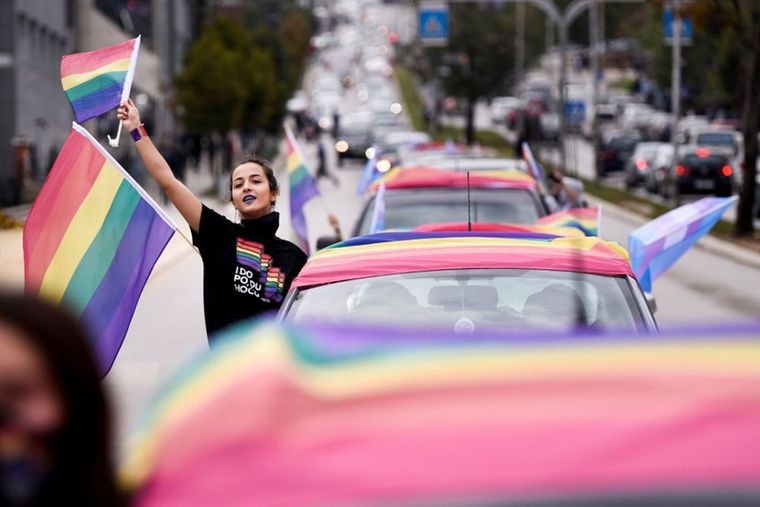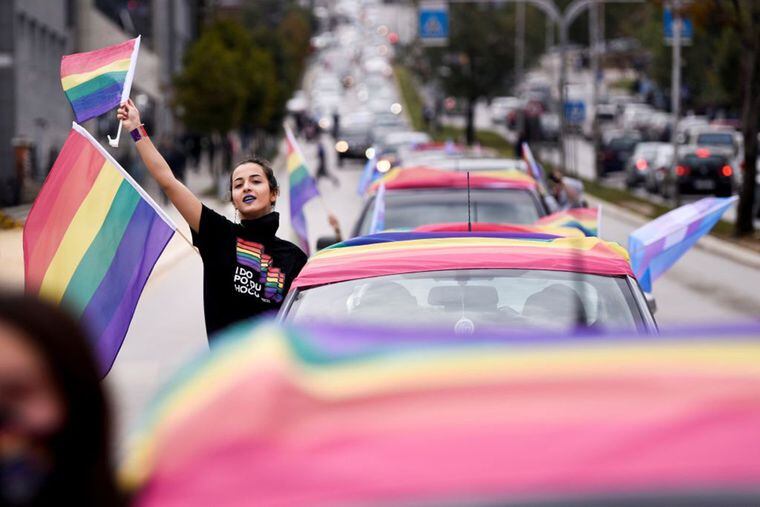

More LGBTQ people reported experiencing job loss and worsening mental health due to the pandemic compared with people who do not identify as LGBTQ, an analysis published last week by the Kaiser Family Foundation found.
The pandemic’s negative impact on mental health has been widely discussed by public health experts, but there has been a lack of data specific to how it has affected the LGBTQ community, said Lindsey Dawson, coauthor of the analysis and the associate director of HIV policy at KFF. The foundation has been polling Americans on how the pandemic has changed their lives for months, and after researchers began asking respondents whether they identify as LGBTQ, they were able to separate the data for further study.
“LGBTQ people have a history of stigma and discrimination,” Dawson said. “They have higher rates of mental illness and lack of access to health care, which is why it’s important to understand the impact of COVID on that community. We know they live on lower incomes and work in industries harder hit by COVID, so this is about understanding how a vulnerable population is impacted.”
In the analysis, 56% of LGBTQ people reported that someone in their household has experienced job loss, furloughs, or a reduction in income or hours due to COVID-19, compared with 44% of non-LGBTQ people. Nearly three in four LGBTQ people also reported that pandemic-related stress has had an impact on their mental health, compared with 49% of non-LGBTQ people.
While the pandemic has been challenging for everyone, LGBTQ people experienced additional burdens due to inequities that have been exposed, said Adrian Shanker, the executive director of the Bradbury-Sullivan LGBT Community Center in Allentown.
“LGBTQ people are more likely to work in the hospitality sector and the survival gig economy, industries that are among the hardest hit,” Shanker said.
Michael Galarraga, a therapist based in Center City, said many of his LGBTQ clients have had to put their lives on hold because they’ve lost their main source of income. These changes have been especially hard for those in performing arts or community-oriented work, like organizing, he said.
“There’s a sense of exhaustion,” he said. “There is a lot of anxiety that comes up from that and from change in general.”
When Shanker’s community center surveyed Pennsylvanians who identify as LGBTQ last spring, more than 70% of the 6,582 respondents reported experiencing a mental health challenge in the last year. Additionally, four in 10 respondents said they have dealt with at least one barrier to receiving health care.
“At the beginning of the pandemic, we were not counted among any of the data,” Shanker said. “We don’t have government data to confirm that LGBTQ people experienced unemployment, but we know anecdotally, the people we serve were affected.”
Data collection in marginalized communities can help secure resources to serve those communities, he said.
The analysis also looked at the response of the LGBTQ community to the pandemic, and found that just 15% of LGBTQ people think that the media exaggerate the severity of COVID-19, compared with one third of non-LGBTQ people.
When it came to vaccination, LGBTQ people reported wanting to get vaccinated at the same rate as non-LGBTQ people. But 75% of LGBTQ people said that getting vaccinated is part of a collective responsibility to protect others, compared with 48% of non-LGBTQ people.
Galarraga said the pandemic made him reflect on his experience as a gay man.
“I’m a pretty extroverted person, and I wouldn’t say that I turned introverted through the pandemic, but I definitely stopped what I was doing before,” he said. “I had to consider how I was showing up for my community of chosen family.”
Dawson said that the LGBTQ community’s experience with HIV/AIDS as well as their political stances may play a role in that difference in opinion as well.
“LGBTQ people are more likely to identify as Democrats, and it’s possible they’re in higher-risk occupations, so there’s a greater acceptance and willingness to participate in social distancing,” she said. “They know that there needs to be public health-driven behavior, not only to curb one’s own risk, but also to curb transmission as well. In doing that, they’re taking steps to take care of their community.”